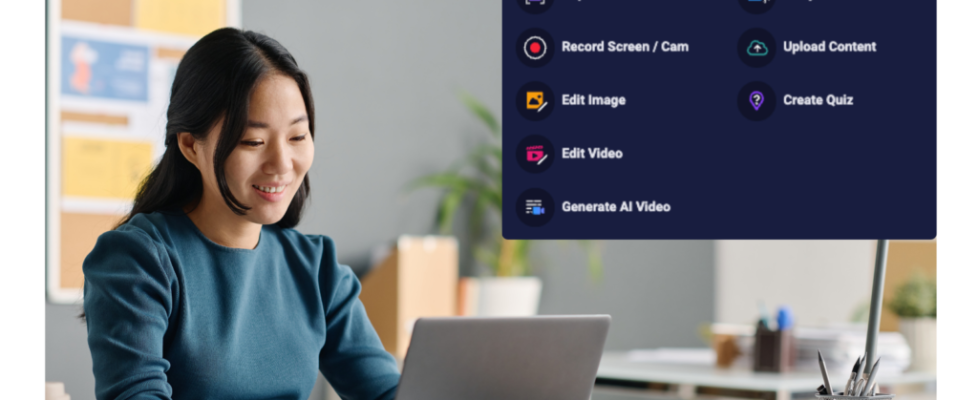“The biggest thing to understand is that technology teaches no one.”
Odd words coming from EdTech advocate Matthew Moore. The seasoned high school teacher has built an online reputation by blogging for the Flipped Learning Network where he frequently writes about integrating technology into the classroom.
Don’t get Moore wrong. He’s a fan of digital tools. But he’s an even bigger fan of solid, dedicated teachers using screencasts as an aide and not a crutch.
“It’s good teaching that must exist first.”
For Moore, combining good teaching with technology builds stronger classrooms. Edtech tools like ScreenPal are merely the vehicle or digital instruction blocks (DIBs) to make it happen.
Improving Lesson Efficiency
Moore introduced flipped learning and screencasting into his Decatur, Illinois math class seven years ago. Since then, he’s utilized technology to create more efficient lesson plans.
“The content of my classroom has not changed, nor has my skill and ability as an educational professional. What has changed is the organizational framework and delivery.”
Among his collection of EdTech tools changing his delivery is the ScreenPal screen recorder. The online video creation platform allows Moore to capture lesson plans, tutorials or explain homework via his computer screen. He uses screencasts to streamline his lesson plans.
Digital Instruction Blocks
Moore has discovered his favorite DIBS through trial and error. He blogs about them, tweets about them and even wrote a book appropriate titled, DIBs: Using Digital Instruction Blocks. As Moore wrote in his book, DIBS is a small piece of digital content within a greater context of teaching students. DIBs can be made up of different types of content including video, infographics, or slide presentations. They are used as tools to teach a particular lesson or topic.
As an example, a class topic about the ‘Solar System’ can have supporting content made up of videos about the stars, infographics about planets, or a slide presentation about the moon. Digital Instruction Blocks takes pieces of digital content to engage the student in a class topic.
He credits DIBs with speeding up the day-to-day teaching process. Moore says it “meets an immediate need in a world where students live and breathe digital.”
Creating Level Ground With Students
Meeting the digital need for students eventually put Moore and his class on level ground. Utilizing screencasts has freed up time allowing him to work one-on-one with students.
Prior to flipping, his students’ level of engagement would waiver depending on their interest. However, that’s all changed.
Moore credits technology with keeping his students more engaged.
“You’d think that might put space between you and the student. But what it really does, it puts you on a more level footing with the student.”
Now instead of being in front of the classroom, Moore can work side-by-side with his class.
“By sitting side by side looking at the same technology you get more of a personal relationship.”
It’s a new way for Moore to build connections with his students that help them inside his class, throughout their high school career and beyond. Moore says former students have reached out to thank him for his level ground approach.
“And they say, ‘hey I’m so glad we did this because either the college I’m at requires me to do this, or I’ve really kind of taken the idea and moved it into my workplace.”
What Moore is giving students is reaching far beyond math.
He’s teaching the importance of integrating technology. He’s also showing each teenager how to work with people, one-on-one or in small groups.
Building Better Teachers
The change in Moore’s students wasn’t instant. After 15 years of teaching, the first person who had to change was Moore. And that’s just what flipped learning did for him.
“At year 15 I was more concerned about getting content to students than I was about teaching the students.”
Then Moore discovered flipped learning and all the digital tools he needed to succeed. It flipped his whole outlook on teaching and reignited his passion for education.
“It’s not just what I teach, but how I teach it and most importantly who I teach.”
Moore says flipped learning sculpted him into a better teacher. He now uses tools like ScreenPal to digitize subcomponents of his lesson. Doing that allows him to focus less on lecturing.
“When you’re focused on a face, or a kid and you see that learning in their eyes, it’s easy to stay passionate at that point rather than being passionate about chapter ten.”
Realigning his focus back on the students has jump-started the second half of his career.
“Passion is about teaching. The tech is just a means of getting from one place to another and taking those parts of teaching that maybe haven’t changed in forever and either eliminating, minimizing, automating or just making those bits more efficient so that parts that matter is the parts you focus on.”

































